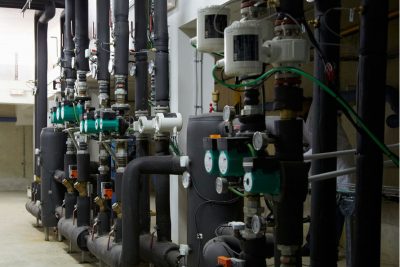RELaTED concept was presented on the 5th International Solar District Heating Conference in Graz, Austria. Roberto Garay and Victor Sanchez, of Tecnalia, drafted a paper to describe the RELaTED decentralized Ultra-Low Temperature DH network scheme. This paper is accesible for download at this link. Below you can read the abstract of this paper.

District heating system.
District heating (DH) systems are key systems for the de-carbonization of heating energy in European Cities. In order to allow for this transition, while guaranteeing competitive energy costs, conversion of DHs is required.
DH operation temperature needs to be reduced in order to increase the performance of renewable systems and operation criteria needs to be adopted for the introduction of weather-dependent, distributed heat sources such as solar systems.
This paper presents the RELaTED decentralized Ultra-Low Temperature DH network scheme, and its adaptation to several operational schemes such as new and existing DH networks, with different levels of complexity. Transitory phases in the conversion process are discussed.
District heating (DH) systems are one of the most energy efficient heating systems in urban environments, with proven reliability within many decades already. DHs have traditionally been designed to be operated in a hierarchized way, with central energy production facilities delivering heat to a variety of distributed consumption locations.
DHs are identified as key systems to achieve the de-carbonization of heating energy in European Cities. (European Commission, 2016) Renewable and waste heat sources are foreseen at the same time as de-carbonized heat sources and the way to guarantee competitive energy costs with limited influence of fossil fuel supply price volatility. To achieve this, a transition is needed in DHs, comprising not only measures to improve overall performance (temperature level reductions, improvement of substations, etc.), but to guarantee system viability as a whole in a context (Harrestrup & Svendsen, 2015) of reduced heat loads with the transition to NZEB (Near Zero Energy Buildings).
RELaTED deploys a decentralized, Ultra-Low Temperature (ULT) DH network concept, which allows for the incorporation of low-grade heat sources with minimal constraints, larger shares of renewable energy sources (RES) and distributed heat sources. ULT DH reduces operational costs due to fewer heat losses, better energy performance of heat generation plants and extensive use of de-carbonized energy sources at low marginal costs.
In the transition towards NZEB and PEH (plus energy houses), RELaTED allows for a prosumer scheme, where positive buildings deliver energy to the grid.
